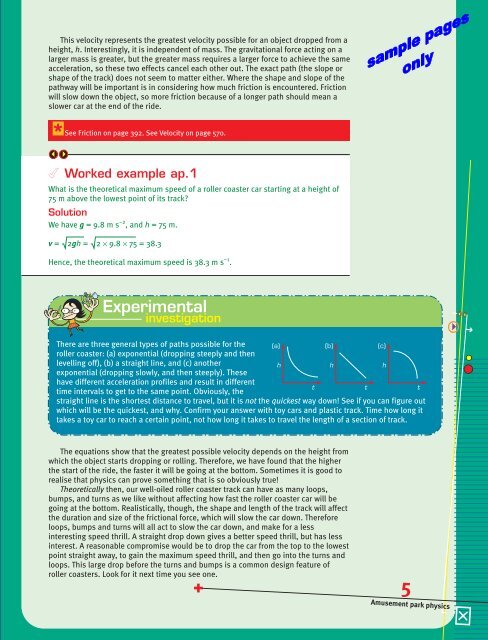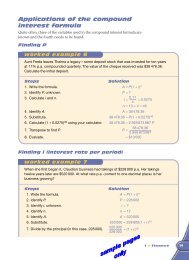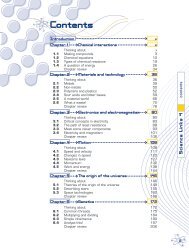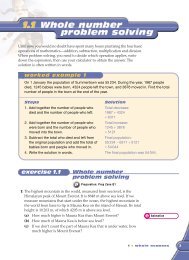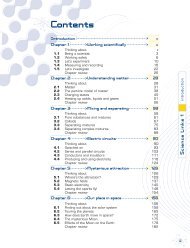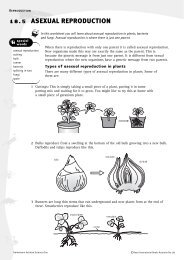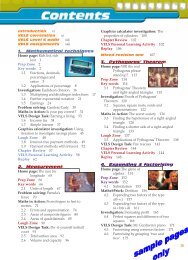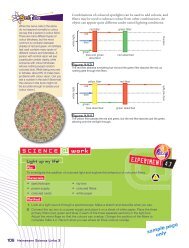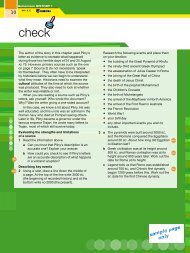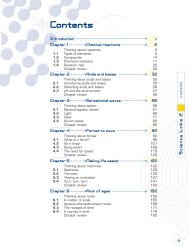Context 1: Amusement Park Physics - hi.com.au
Context 1: Amusement Park Physics - hi.com.au
Context 1: Amusement Park Physics - hi.com.au
Create successful ePaper yourself
Turn your PDF publications into a flip-book with our unique Google optimized e-Paper software.
T<strong>hi</strong>s velocity represents the greatest velocity possible for an object dropped from a<br />
height, h. Interestingly, it is independent of mass. The gravitational force acting on a<br />
larger mass is greater, but the greater mass requires a larger force to ac<strong>hi</strong>eve the same<br />
acceleration, so these two effects cancel each other out. The exact path (the slope or<br />
shape of the track) does not seem to matter either. Where the shape and slope of the<br />
pathway will be important is in considering how much friction is encountered. Friction<br />
will slow down the object, so more friction bec<strong>au</strong>se of a longer path should mean a<br />
slower car at the end of the ride.<br />
* See Friction on page 392. See Velocity on page 570.<br />
<br />
<br />
✔ Worked example ap.1<br />
What is the theoretical maximum speed of a roller coaster car starting at a height of<br />
75 m above the lowest point of its track?<br />
Solution<br />
We have g = 9.8 m s –2 , and h = 75 m.<br />
v = 2gh = 2 × 9.8 × 75 = 38.3<br />
Hence, the theoretical maximum speed is 38.3 m s –1 .<br />
Experimental<br />
investigation<br />
There are three general types ofpaths possible for the<br />
roller coaster: (a) exponential (dropping steeply and then<br />
(a) (b) (c)<br />
levelling off), (b) a straight line, and (c) another<br />
exponential (dropping slowly, and then steeply). These<br />
h<br />
h<br />
h<br />
have different acceleration profiles and result in different<br />
time intervals to get to the same point. Obviously, the<br />
t<br />
t<br />
t<br />
straight line is the shortest distance to travel, but it is not the quickest way down! See if you can figure out<br />
w<strong>hi</strong>ch will be the quickest, and why. Confirm your answer with toy cars and plastic track. Time how long it<br />
takes a toy car to reach a certain point, not how long it takes to travel the length of a section of track.<br />
The equations show that the greatest possible velocity depends on the height from<br />
w<strong>hi</strong>ch the object starts dropping or rolling. Therefore, we have found that the <strong>hi</strong>gher<br />
the start of the ride, the faster it will be going at the bottom. Sometimes it is good to<br />
realise that physics can prove somet<strong>hi</strong>ng that is so obviously true!<br />
Theoretically then, our well-oiled roller coaster track can have as many loops,<br />
bumps, and turns as we like without affecting how fast the roller coaster car will be<br />
going at the bottom. Realistically, though, the shape and length of the track will affect<br />
the duration and size of the frictional force, w<strong>hi</strong>ch will slow the car down. Therefore<br />
loops, bumps and turns will all act to slow the car down, and make for a less<br />
interesting speed thrill. A straight drop down gives a better speed thrill, but has less<br />
interest. A reasonable <strong>com</strong>promise would be to drop the car from the top to the lowest<br />
point straight away, to gain the maximum speed thrill, and then go into the turns and<br />
loops. T<strong>hi</strong>s large drop before the turns and bumps is a <strong>com</strong>mon design feature of<br />
roller coasters. Look for it next time you see one.<br />
✚<br />
5<br />
<strong>Amusement</strong> park physics<br />
<br />
<br />
➔<br />
⌧


